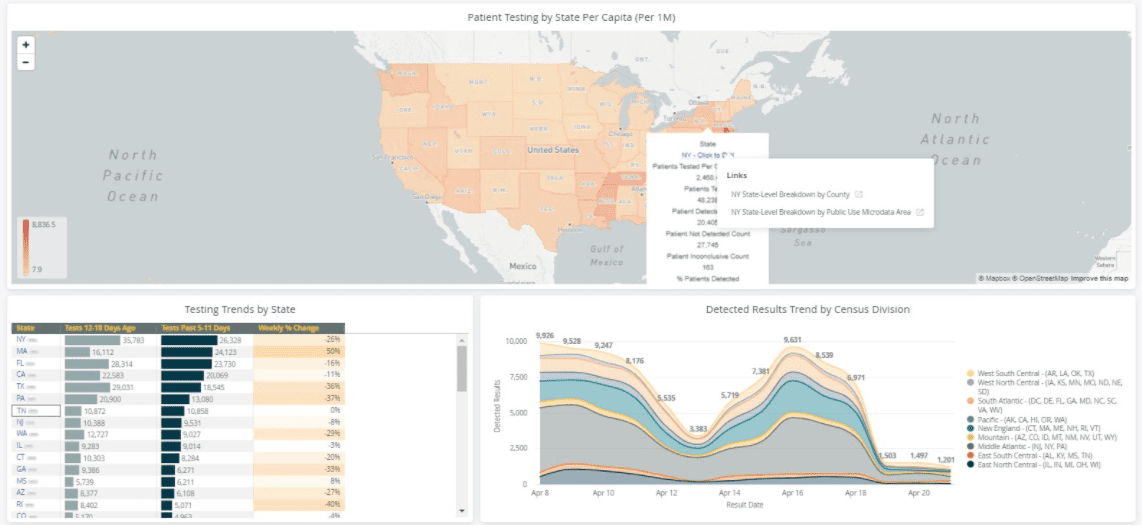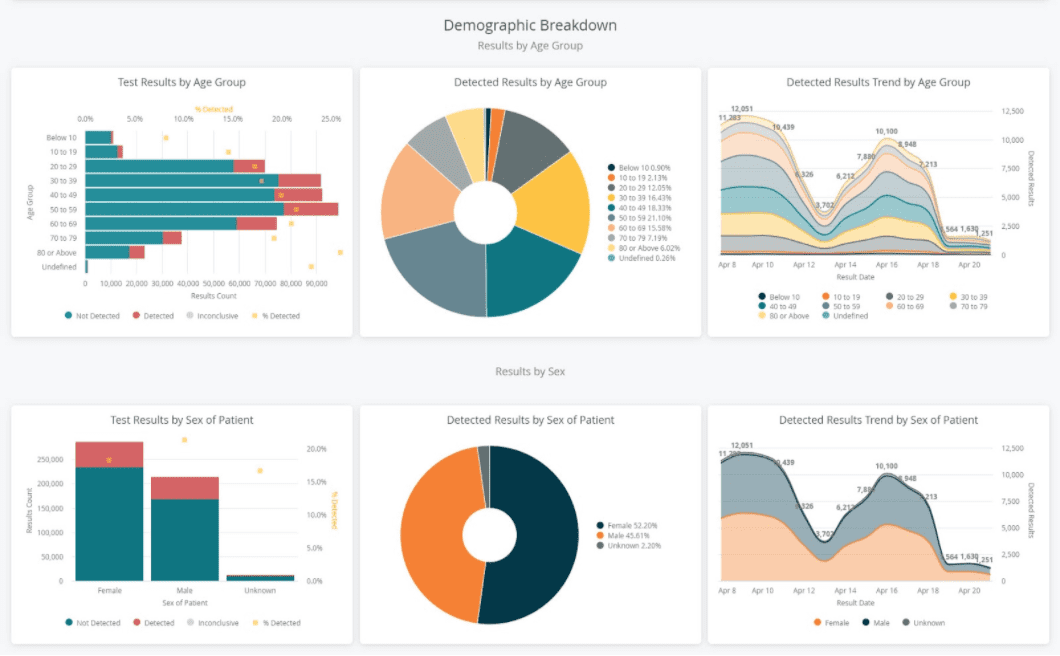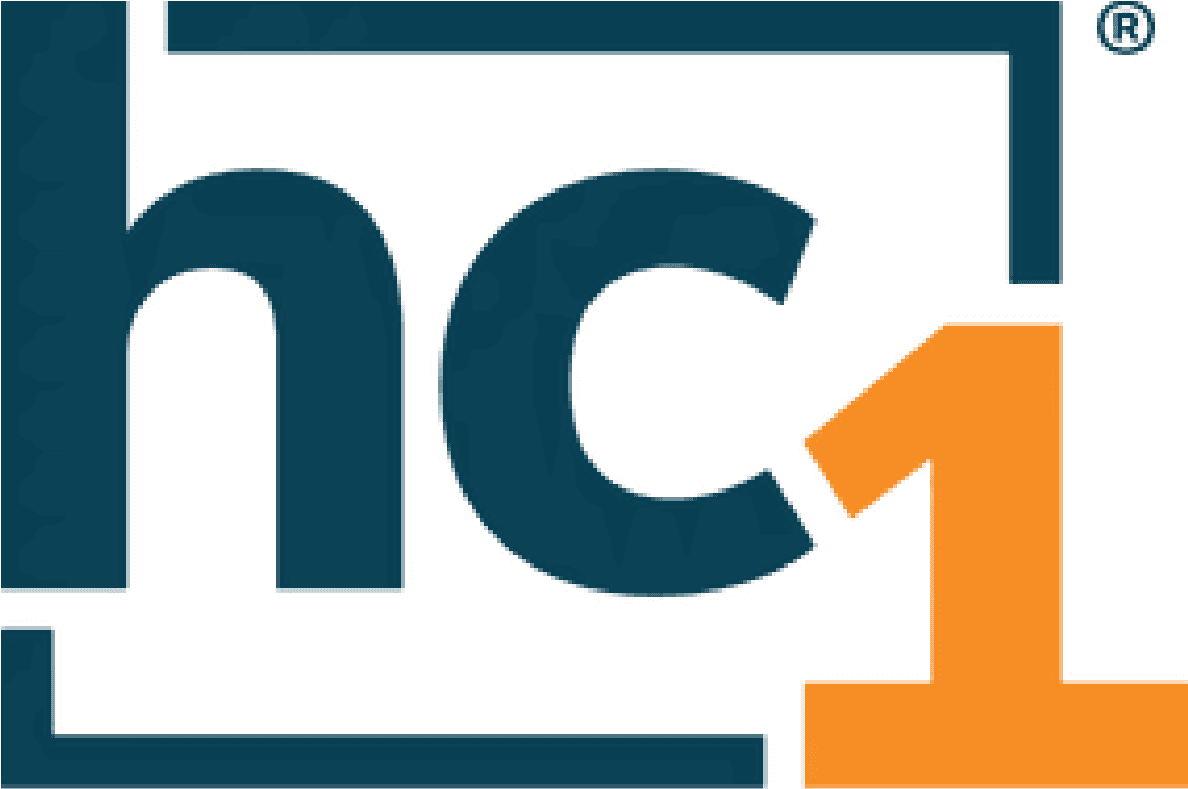April 22, 2020
The CV19 Lab Testing Dashboard powered by hc1 is a free offering to the professional community of public health, government, and healthcare provider organizations. It was awarded the Spotlight Project distinction in the ONC-backed Datavant Pandemic Response Hackathon (held March 27-29) and was featured in a national webinar (April 17) of the COVID-19 Healthcare Coalition led by Amazon Web Services, the Mayo Clinic, and the MITRE Corporation.
This dashboard is made possible by the lab coalition built from a national network of integrated commercial and health system labs that leverage the hc1 Platform™ to deliver precision testing services for their provider clients. This platform is an important part of what differentiates the CV19 Lab Testing Dashboard from other COVID-19 dashboards.
The hc1 analytical engine operates on AWS to optimize the world’s most powerful cloud computing infrastructure for lab-centric bioinformatics. It has the capacity to ingest high volumes of data from diverse sources and link these attributes to unique individual patients longitudinally in a de-identified environment while generating visually instructive reporting tables, graphs, and heat maps. The Machine Learning (ML)-powered platform has more than 19 Billion lab transaction results and organizes data elements by organizations/locations, providers, and patients (160M) to accurately link de-identified individual patient records with longitudinal analysis.
For the CV19 Lab Testing dashboard, the cumulative data repository currently encompasses about 40% of national CV19 test results across 20K+ collecting locations, covering 50 states and more than 90% of the counties in the United States. Within minutes of the receipt of SARS-CoV-2 PCR test results into the hc1 data repository, the dashboard disseminates high-fidelity insights via an intuitive interface, providing the fastest possible access to test results data.
Geographic mapping of test results based on patient, test ordering, or specimen collection location zip code gives users the ability to drill down to state, multi-county, single county, and/or PUMA (Public Use Microdata Area) to visualize the local data via mapping, graphical and tabular analytical tools.

The dashboard also includes filters and reports for Detected (+), Not Detected (-), and Inconclusive test result types. With this timely objective data direct from the lab, hc1 is able to report illustrate the total number of tests run per day, the number positive for Detected virus (red), the number negative (Not Detected), and the % Detected (+), which is the percent of total tests reported that had a positive Detected result.
Although the test is not administered to a random sample of the total population, this % Detected Rate gives the ‘best available’ real-time index of (i.) the general rate of infectivity in the local community, and (ii.) whether the local epidemic of the SARS-CoV-2 virus (virus causing COVID-19) is accelerating “up”, or decelerating “down.”

Because both gender and date of birth are reliably collected at the site of testing with each COVID-19 test administered, hc1 can aggregate the variables of age and gender against % detected (+) rates over time. This is illustrated below. Note the higher rate of % Detected (+) for men vs. women.

About the Author
Peter J. Plantes, M.D. has three decades of experience creating service and delivery solutions that enhance marketplace success and clinical performance for clinical practice groups, academic faculty group practices, hospitals, health systems, and health care organizations. His success stems from his ability to blend and synergize clinical knowledge, operational expertise, financial performance, and collaborative methodology with his deep commitment to serve patients and improve the health of the community. Dr. Plantes has served in CEO & Physician Executive roles for a number of large healthcare clinical delivery networks including regional community networks, academic practices, national hospital networks, international health systems (Chile, Colombia), and corporate managed care/HMO networks.












